
Organization of the Human Nervous System The Nervous System MCAT Biology Review
The nervous system is a network of neurons whose main feature is to generate, modulate and transmit information between all the different parts of the human body. This property enables many important functions of the nervous system, such as regulation of vital body functions ( heartbeat, breathing, digestion), sensation and body movements.
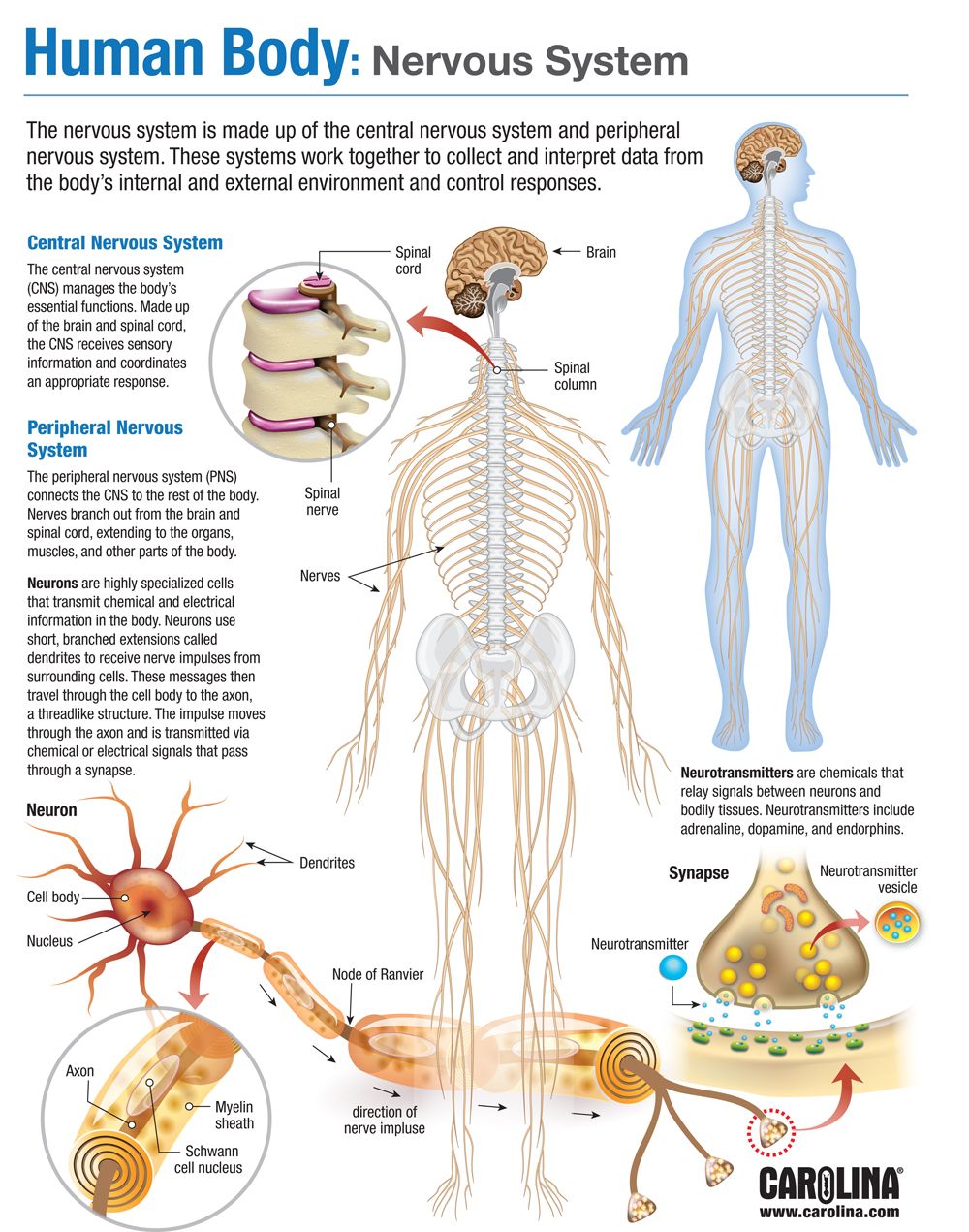
Human Nervous System Structure And Functions Explained With Diagrams Images and Photos finder
This Osmosis High-Yield Note provides an overview of Anatomy and Physiology of the Nervous System essentials. All Osmosis Notes are clearly laid-out and contain striking images, tables, and diagrams to help visual learners understand complex topics quickly and efficiently. Find more information about Anatomy and Physiology of the Nervous System.

Peripheral Nervous System (PNS) Parts and Function
Your brain is an essential organ. All of your emotions, sensations, aspirations and everything that makes you uniquely individual come from your brain. This complex organ has many functions. It receives, processes and interprets information. Your brain also stores memories and controls your movements.

Nervous System Anatomy and Physiology Nervous system, Nclex and Student nurse
Your nervous system's main function is to send messages from various parts of your body to your brain, and from your brain back out to your body to tell your body what to do. These messages regulate your: Thoughts, memory, learning and feelings. Movements (balance and coordination).

A diagram showing the Central Nervous System (CNS) and a flowchart explaining how it sends ou
The nervous system is a network of special cells, neurons and ganglia, that work together to carry out the transmission and reception of signals between different parts of our body. The signals are transmitted in the form of electrochemical waves or chemicals.

PPT Human Body Systems PowerPoint Presentation, free download ID3603193
The nervous system produces a response in effector organs (such as muscles or glands) due to the sensory stimuli. The motor ( efferent) branch of the PNS carries signals away from the CNS to the effector organs. When the effector organ is a skeletal muscle, the neuron carrying the information is called a somatic motor neuron; when the effector.

organization of the nervous system Medical school organization, Medical knowledge, Human
The human nervous system is divided into two main parts: the central nervous system (CNS) and the peripheral nervous system (PNS). These two main divisions, which are shown in Figure 1, help ensure that the three broad functions of the nervous system are carried out efficiently. Figure 1: An illustration of the two main divisions of the human.
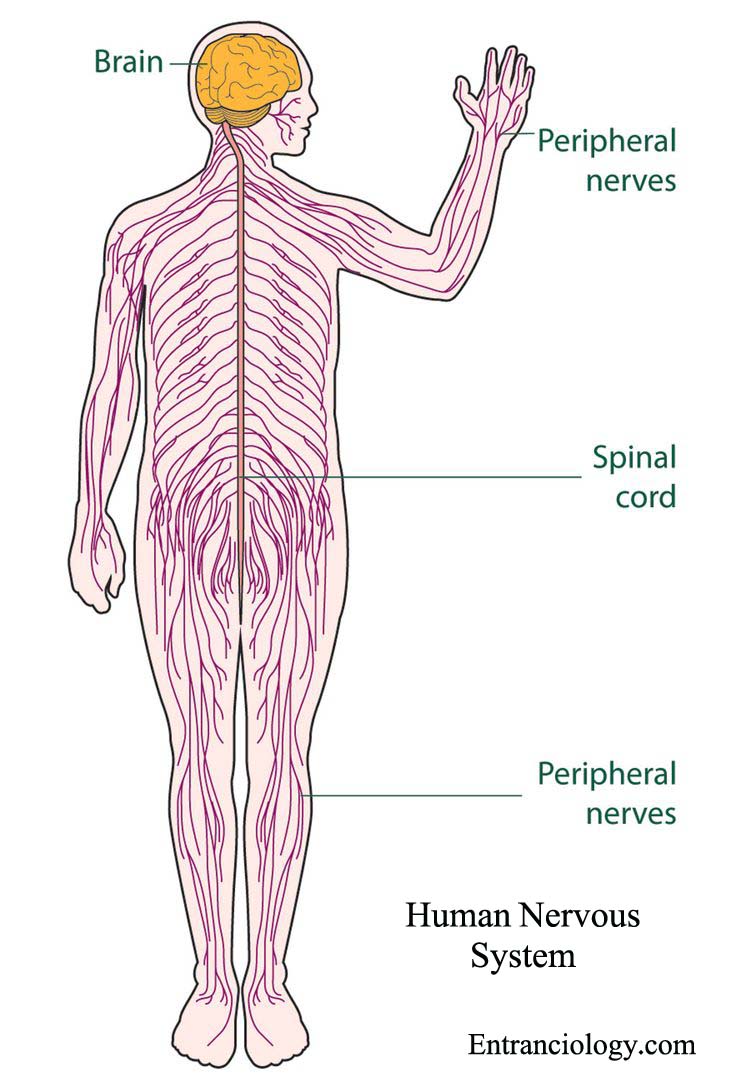
What is Human Nervous System ? Structure and Functions Human Physiology and Anatomy
The human nervous system consists of: the central nervous system (CNS) - the brain and spinal cord the peripheral nervous system - nerve cells that carry information to or from the CNS.
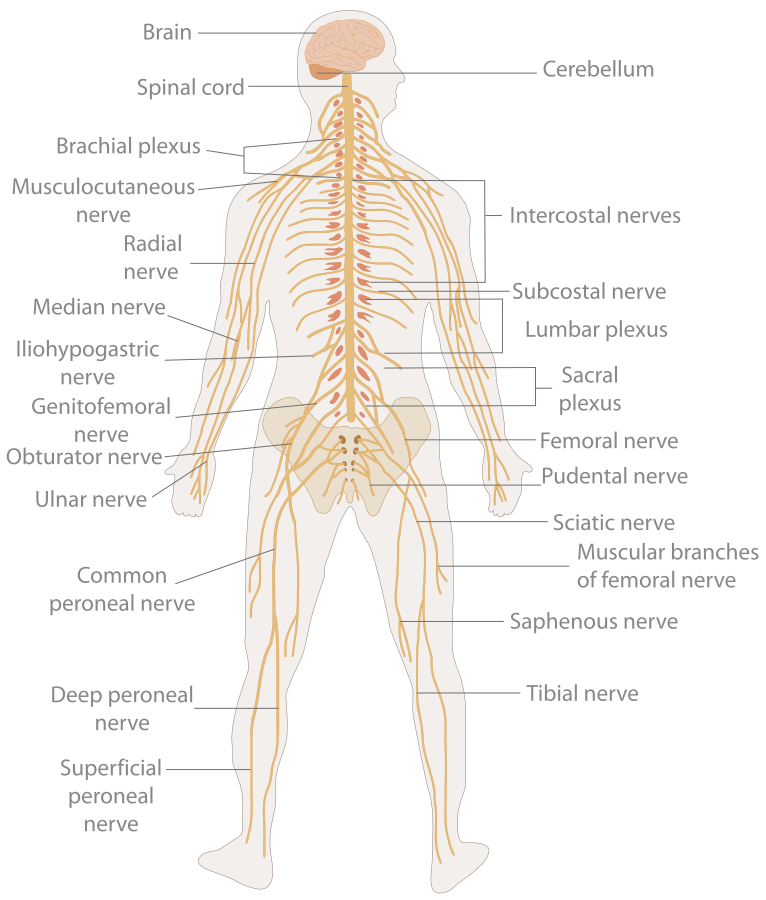
8.2 Introduction to the Nervous System Human Biology
Below the arachnoid mater is the cerebrospinal fluid, or CSF. This fluid cushions the entire central nervous system (brain and spinal cord) and continually circulates around these structures to remove impurities. The pia mater is a thin membrane that hugs the surface of the brain and follows its contours. The pia mater is rich with veins and.
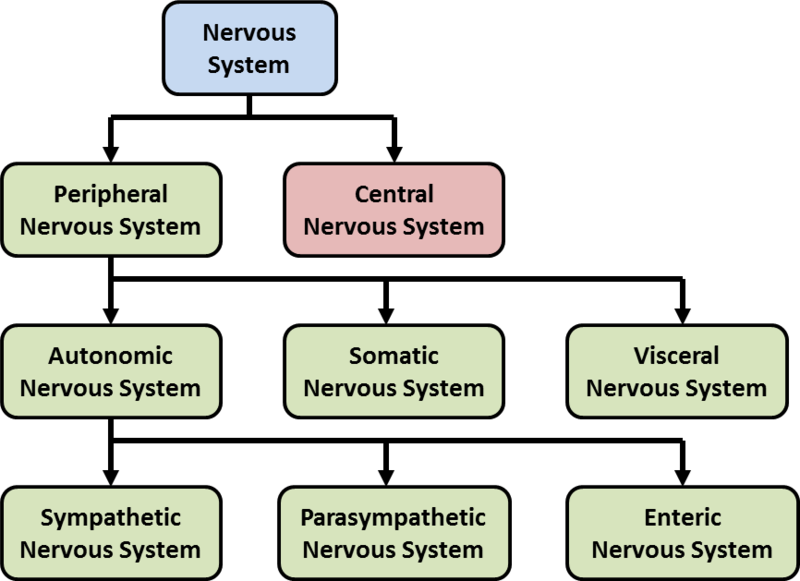
Nervous system MEpedia
Nervous tissue, present in both the CNS and PNS, contains two basic types of cells: neurons and glial cells. A glial cell is one of a variety of cells that provide a framework of tissue that supports the neurons and their activities.
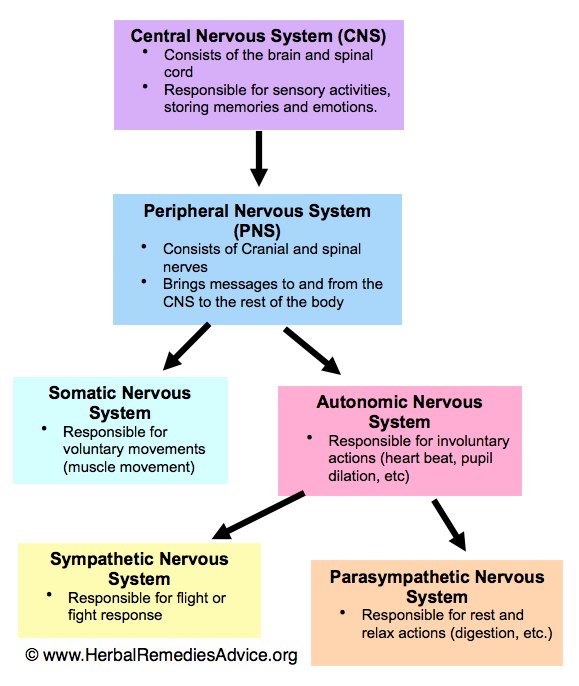
Structure of the Nervous System
Summary The brain connects to the spine and is part of the central nervous system (CNS). The various parts of the brain are responsible for personality, movement, breathing, and other.
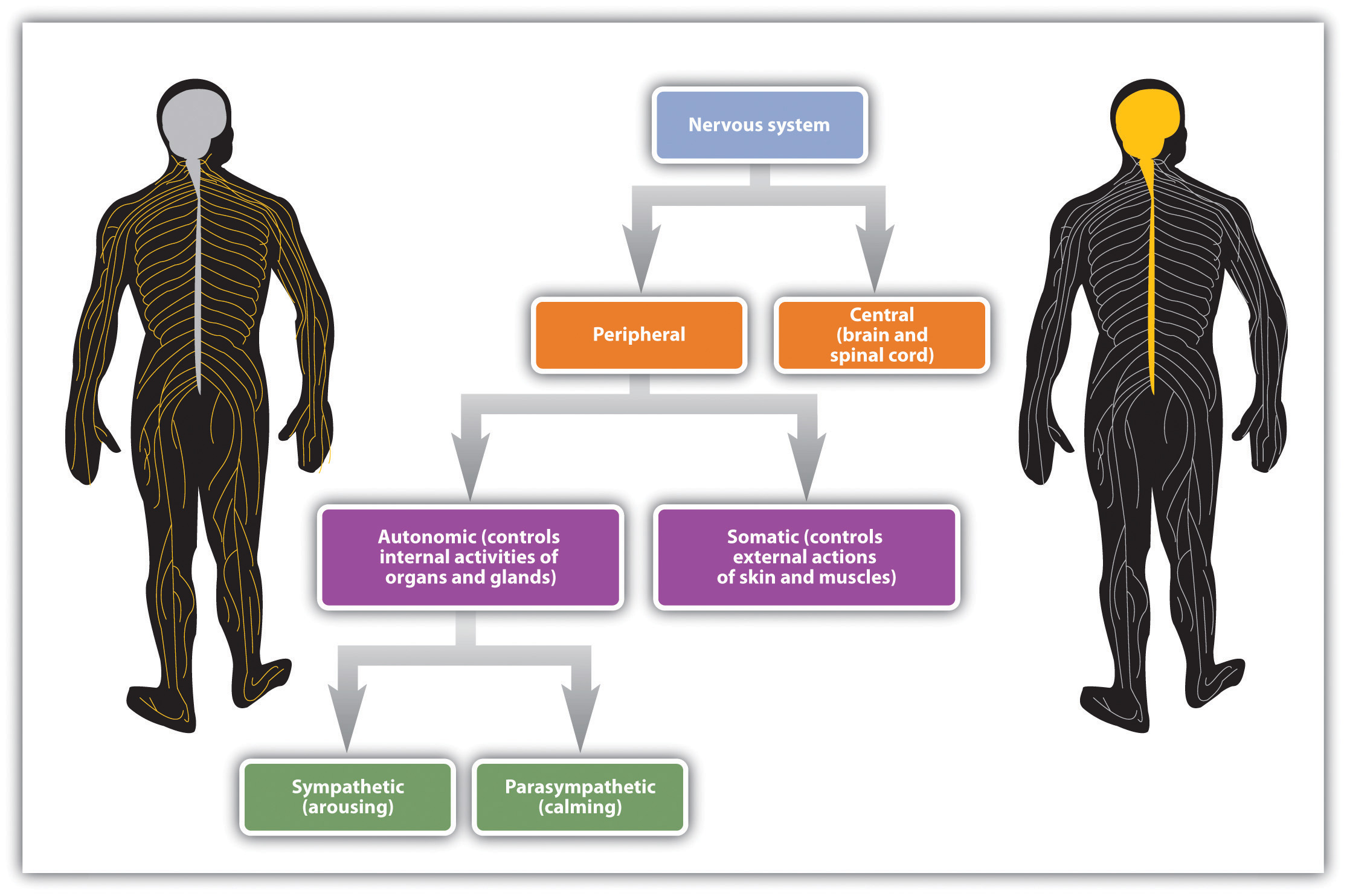
5.3 Putting It All Together The Nervous System and the Endocrine System Introduction to
3,53,617 What is the Nervous System? The nervous system or the neural system is a complex network of neurons specialized to carry messages. The complexity of the nervous system increases as we move towards higher animals. For instance, cnidarians such as jellyfish have relatively simple nerve nets spread throughout their body.
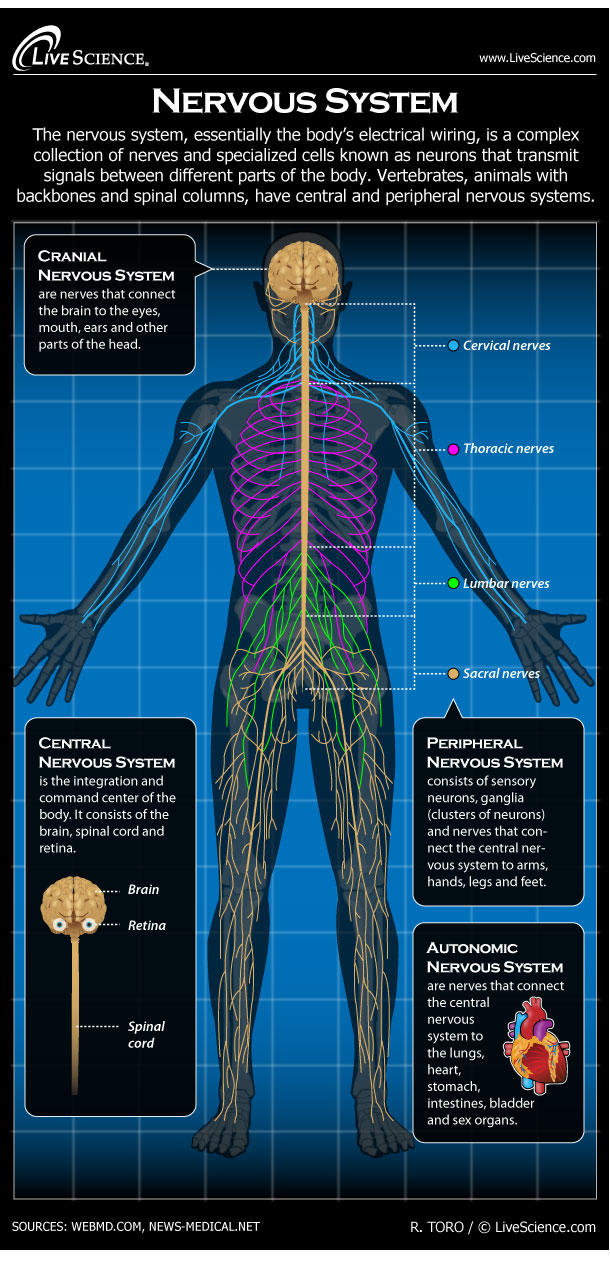
Human Nervous System Diagram How It Works Live Science
The central nervous system (CNS) is composed of the brain, spinal cord, and cerebellum. The peripheral nervous system (PNS) consists of sensory neurons, motor neurons, and neurons that communicate either between subdivisions of the PNS or connect the PNS to the CNS. The Human Nervous System: The major organs and nerves of the human nervous system.

2.2 Human Nervous System SPM Science
As with other higher vertebrates, the human nervous system has two main parts: the central nervous system (the brain and spinal cord) and the peripheral nervous system (the nerves that carry impulses to and from the central nervous system). In humans the brain is especially large and well developed. Human nervous system interactive
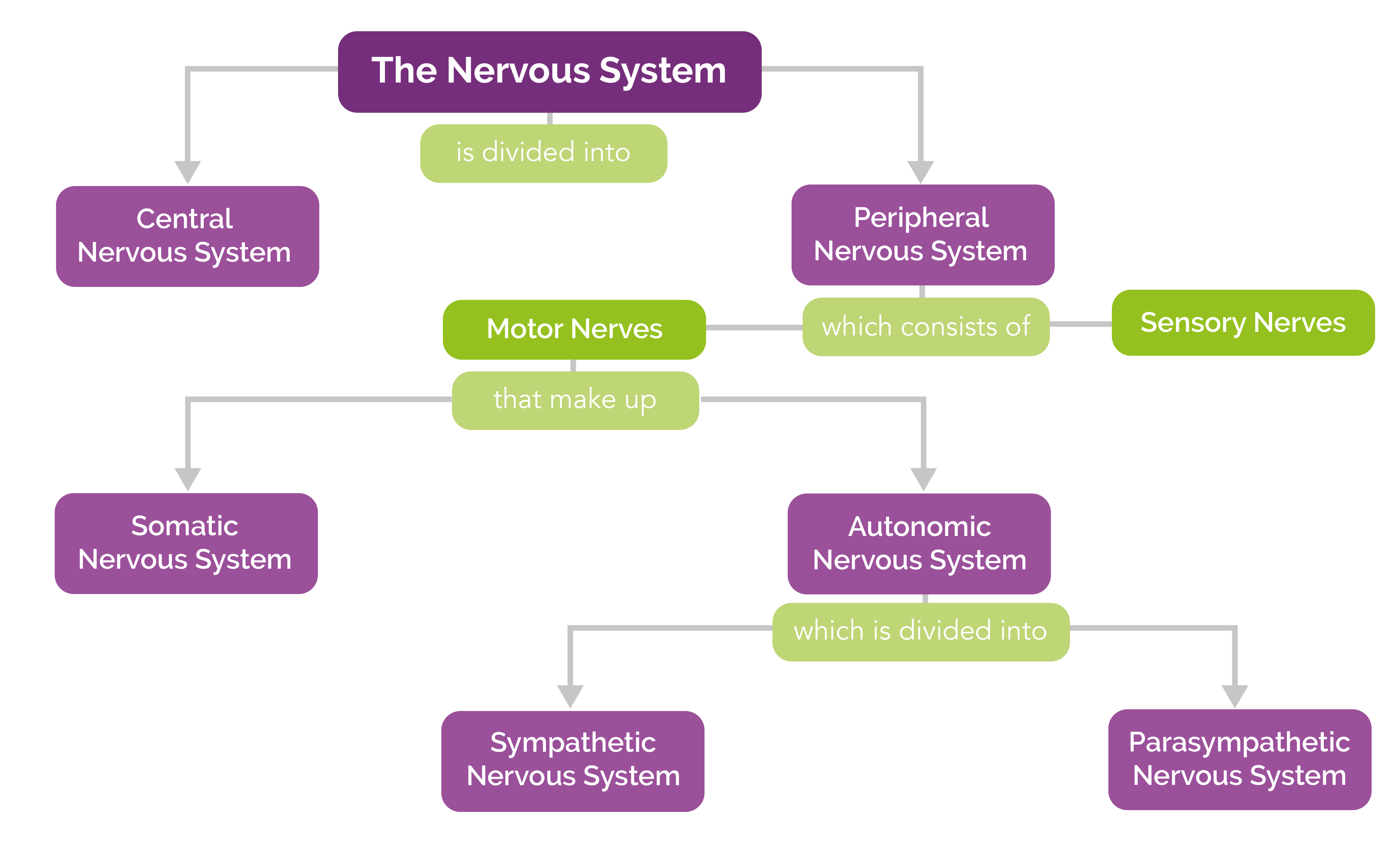
Nervous System Explained Chiropractic Wellness Centre Leicestershire
human body maps nervous system Nervous System The nervous system has two major parts: the central nervous system (CNS) and the peripheral nervous system (PNS ). The central system is.
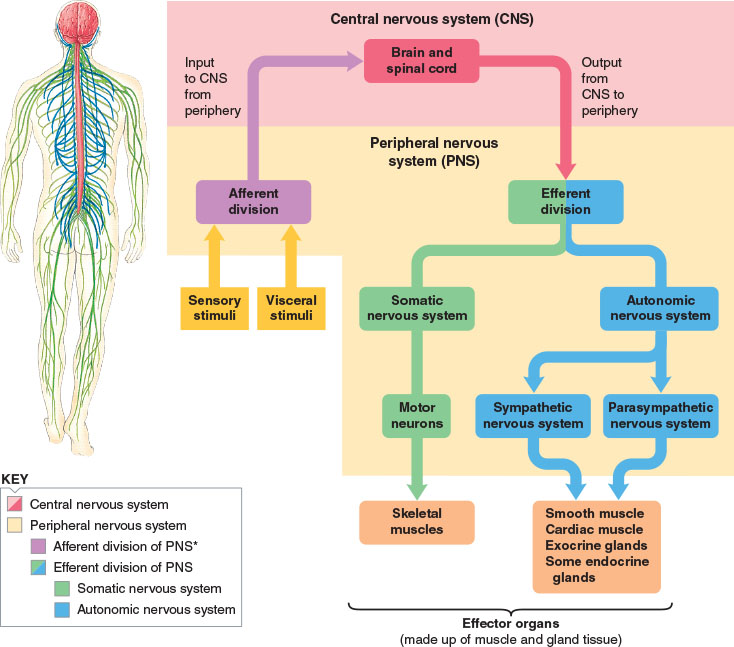
The Nervous System SHEN Centre for Health and Wellness
Figure 42.2. 2: The (a) resting membrane potential is a result of different concentrations of Na + and K + ions inside and outside the cell. A nerve impulse causes Na + to enter the cell, resulting in (b) depolarization. At the peak action potential, K + channels open and the cell becomes (c) hyperpolarized.